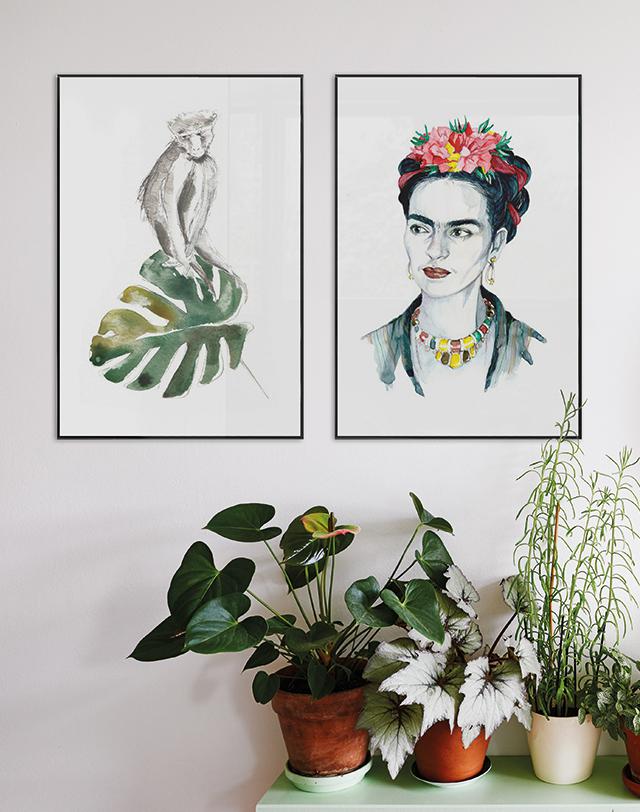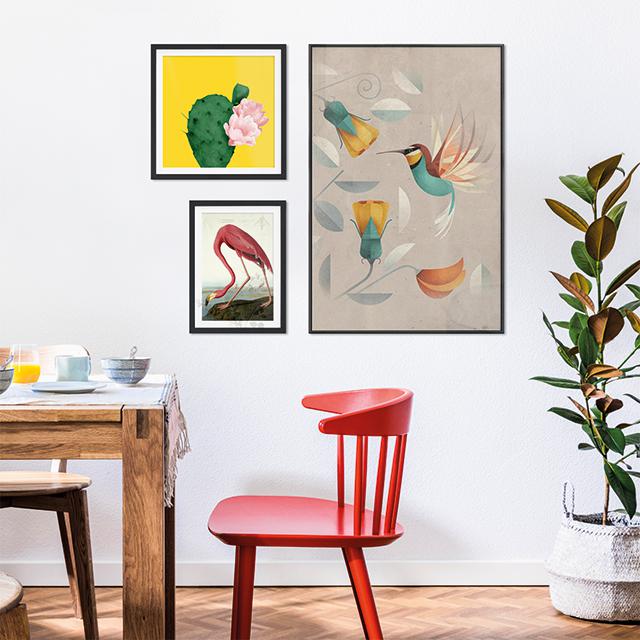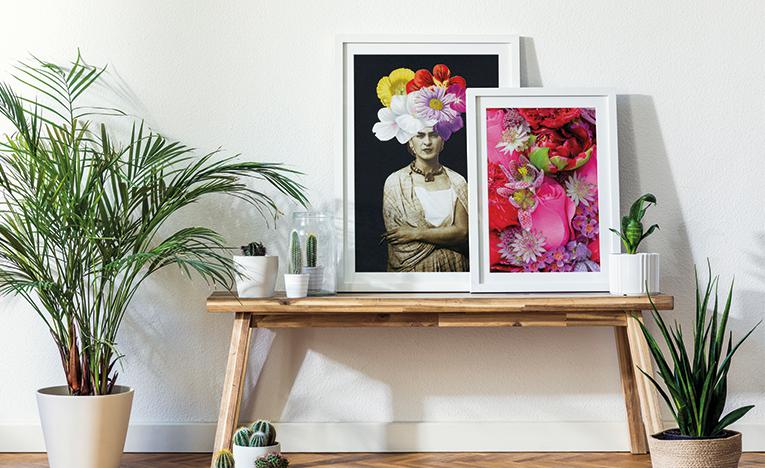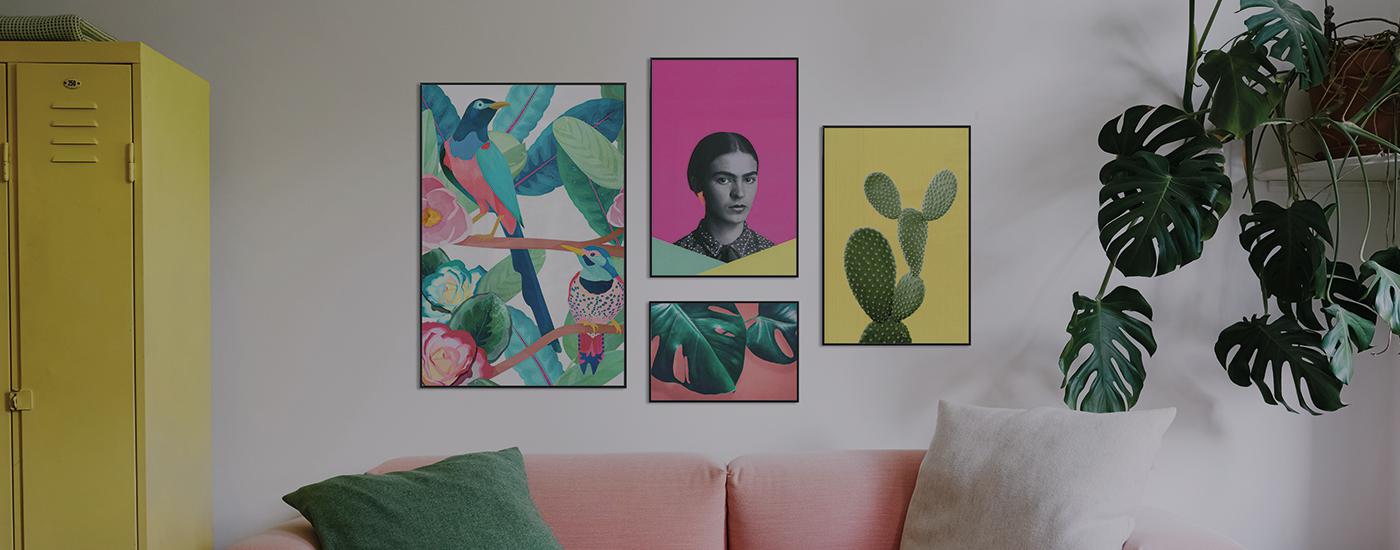Frida Kahlo is everywhere: from art, cinema and literature to cushions, notebooks and posters. Whether on the fashion runway or in magazine features, the Mexican artist has become a muse for creative minds the world over—including our own JUNIQE artists. Aside from challenging traditional notions of femininity and her distinctive appearance, which has fascinated pop culture for decades, Frida’s real power lies in her paintings. Behind her mysterious eyes lies the soul of an emotive artist with a gift for self-expression. Through detailed self-portraits she manages to convey a strong, feminist personality, making her a truly iconic figure.

The making of an artist
Frida Kahlo's creative output consists mostly of self-portraits in which she explores questions of identity and existence. A pivotal moment in her life came following a traffic collision when she was 18. The accident left the young Frida infertile and with severe back injuries and her recovery would have a profound effect on her life and work. Being confined to her bed for over a year, she was left with little to do. With a mirror hanging above her bed, she began to paint herself—a process that would result in a large portion of her celebrated body of artistic work.
After recovering, Frida began socialising again with old school friends, joined the Communist Party, and met fellow revolutionary and artist Diego Rivera, whose murals she admired. He believed in her talent, encouraging her to continue her career as a painter. Although they fell in love and wed, Rivera's infidelity ran as a bitter thread through their marriage. Their failure to conceive was an experience that, just like the traffic accident some years before, would leave a monumental mark on Frida Kahlo’s artwork.
What makes Frida’s paintings so distinctive is her graceful ability to visualise the physical and mental pain she felt, and the emotions that arose as a result. A mixture of symbolism and realism, twinned with her eye for detail, conveys the suffering she endured. Through a rich symbolic tapestry, she channels her complex emotions onto canvas, making them more manageable. By lending an aesthetic voice to her emotions, she becomes an open picture book, allowing us to peer into her soul. Thus, she has become a source of inspiration for artists and a muse for contemporary society.

On signs and symbolism
Many have regarded her work as surreal, although Frida Kahlo—a feminist—rejected the term. The reason presumably being that surrealism is largely rooted in Freudian psychology of the subconscious, in which women often play a subordinate role. She claimed not to paint dreams, but rather her own reality, peppered with symbolism. In her artwork, she incorporated details such as hummingbirds—a sign of hope and happiness in Mexican culture—but also playful primates and lush flowers. A key example is one of her most famous paintings, “Self-portrait with thorn neck strap”, a work in which she showed that she had risen and started a new life. The monkeys in her works, however, have a more ambiguous meaning. On the one hand, they were her pets, but on the other, they represent seduction in Mexican symbolism, also conveying communication, creativity, and offering an insight into the dark side of man—possibly a coded reference to her husband’s infidelities.
Your true colours
So what can we learn from Frida? One important lesson is to find strength in symbols. Channel your emotions aesthetically and release some soul into your interior. From flamingos to crocodiles, find your spirit animal and pay homage to your inner being with wild wall art. If you’re looking to manifest the qualities you wish to develop within yourself, you can also adorn your interior with floral prints.
Or perhaps make Frida your muse. From pop art illustrations to pastel fashion icons and Playmobil figures—discover all the Fridas our artists have created in our Kahlo collection and create your very own mural of inspiration.

Text: Laura Veneklaas
Translation: Nicholas Potter
